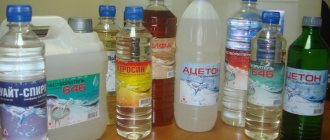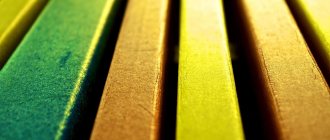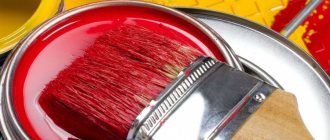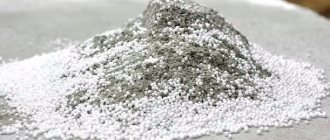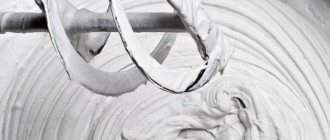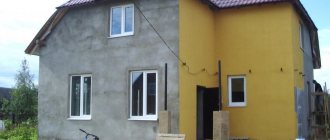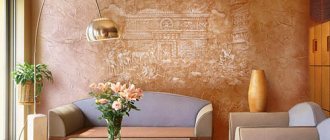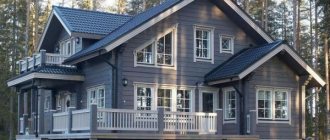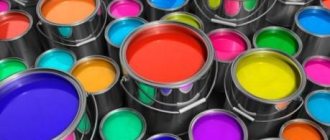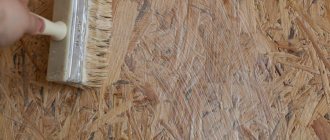Oriented strand board or OSB is a material in demand in modern construction. It is made from pressed or glued wood chips with the addition of resins and impregnations. Typically OSB is used as a rough structural material that requires finishing. But design trends have shown that the facade of a building, finished with OSB, can look original after painting the slabs, without additional covering.
Where are you planning to paint the OSB?
Inside Outside
OSB should be painted with special paint after preliminary preparation of the structure. Before starting work, you need to select a dye, depending on where you want to use it - indoors or outdoors.
Why paint OSB?
Painting is carried out not only to make the relief surface of the slabs more attractive. The painted layer protects the wood from the effects of precipitation or moisture. After the coating has completely dried, moisture will not be able to penetrate into the thickness of the slabs, which can prevent their deformation.
Painting is needed even if OSB is used for the primary finishing of the exterior of the building with the fastening of lining, siding or sheet insulation. To protect against moisture, mold, and mildew, OSB must be treated with a special emulsion. To provide additional protection, you can apply an additional layer of acrylic paint to the OSB, which will act as a primer.
If the strand board needs to be painted with a finishing layer, choose fireproof compounds that do not spontaneously combust and can withstand prolonged exposure to direct sunlight.
Liquid wallpaper on OSB without putty
You can stick liquid wallpaper onto an OSB board without using preliminary finishing, that is, the walls do not need to be plastered and puttied, since this material perfectly hides small irregularities.
The technology for applying the composition is as follows:
- Prime the walls well by applying 2 layers of acrylic primer with an antiseptic.
- Dilute liquid wallpaper exactly according to the instructions written on the package.
- As soon as the composition is ready, its application begins with a trowel. To do this, place a small amount of material on the tool and distribute it over the surface.
- Finishing begins from the corner - it is advisable to cover the entire wall in one step so that there are no visible transitions.
What to consider when choosing paint
When selecting paint, it is necessary to take into account the characteristics of the building material.
- Adhesive characteristics of the dye and the OSB it covers. Some paints and varnishes (paint and varnish materials) interact poorly with OSB due to the presence of resins in the composition, which do not allow the paint mixture to pass into the material well. It is better not to paint OSB with water-based paint or other water-soluble mixtures. It is better to use acrylic or polymer-based paints.
- Factuality of OSB. The greater the unevenness of the slab, the greater the paint consumption. Uneven textures require more careful preparation.
- OSB age. If they have not been cleaned and have been left outdoors exposed to sunlight and precipitation for more than a year, there may be problems with painting. In order to paint such materials with high quality, they must first be cleaned of dirt, sanded, and treated with an antiseptic.
When choosing paint, you must also consider how the surface will be decorated, whether there is a need to preserve the texture of the slab or whether it needs to be made smooth.
The area of application of the paint and varnish material is important, since to paint the floor it is necessary to use paint compositions that are more resistant to mechanical stress.
There are a number of recommendations that should be taken into account when selecting a dye.
- Since OSB is composed almost entirely of wood, oil paints are versatile for them. The highest quality products from the Coloray and Syntilor brands. They are characterized by good adhesion, minimal absorbency, and low material consumption due to the drying oil included in its composition. Once the oil dye is applied, a protective skin forms on the slab, making the mixture an ideal material for applying to floors.
- Alkyd enamels are suitable for both floors and walls. After their application, a reliable layer is formed, but unlike oil paints, alkyd paints have a high consumption of the coloring composition.
- Water-based paints can be used to paint walls in dry rooms, since they are weakly resistant to moisture. The advantage of water-based compositions is that they are environmentally friendly, so they can be applied to the walls of children's rooms, bedrooms, and other rooms. There are brands of water-based emulsions that are resistant to regular wet cleaning. The highest quality coloring compounds: Tikkurila, Teknos, Sadolin brands.
- If it is necessary to paint in rooms with high humidity, it is better to choose polyurethane dyes based on organic solvents. They are manufactured by AkzoNobel (International), Sterling, Coatings. Together with the resins inside the OSB, polyurethane paints form a strong, durable, wear-resistant layer after application.
- To preserve the original textured pattern of the OSB, the board can be coated with a water-based transparent varnish. This layer further improves the quality of the wall surface.
- When OSB is laid on a floor or the material is a final floor finish, an epoxy compound can be applied on top to give it a smooth texture. You can add color to the mixture to give the floor any color. The principle of applying the epoxy mixture is similar to the method of forming a self-leveling polymer 3D floor.
Why preparation is required
The production technology for smallpox involves the use of wood chips and a mixture of synthetic resins, with which the chips are glued together under a certain pressure. To obtain waterproof panels, special impregnations based on the same resins and paraffin are used, which make the material resistant to moisture.
Regardless of the type of slabs chosen, before painting, you will need to pre-treat the surfaces with primers, sand them, or even putty them. The fact is that paint simply does not adhere well to unprimed surfaces of this material, and if a waterproof version of the panels is chosen, the impregnation components may bleed through the applied paint layer.
At the same time, the moisture contained in the paint can be absorbed into the material, causing it to swell. The part loses its shape and the surface will no longer be smooth. In addition, the paint will also lose some of its properties due to uneven drying of the applied layer.
All this leads to the plane losing its beautiful appearance and deteriorating the quality of the work. Moreover, the surface of the OSB has roughness formed by the shavings and wood chips included in the boards, and after painting, their structure will be visible. If you want to avoid this, you will have to spend some time eliminating all problems.
Choosing paint for exterior work
You need to choose a paint that is resistant to UV radiation. Otherwise, the paint and varnish material will quickly delaminate under the influence of sunlight, and the walls will need to be painted again.
For exterior work, it is better to choose polymer-based dyes that are suitable for coating wood surfaces. Such paints will reliably protect the surface from precipitation and the influence of ultraviolet radiation. They apply well and are used sparingly.
Before application, it is necessary to prepare the slab, level it, and then prime it. Large dents, holes, and OSB joints are best sealed with putty.
On the facade and external walls it is better to use oil, alkyd, acrylic, latex paints and others.
Oil paints. This type of dye is poorly absorbed into the surface and has good viscosity. It takes a long time to dry, but after drying it forms a dense protective layer with increased performance properties. Disadvantages: high cost, relatively short service life, long drying time, severe smudges. The dye mixture has a pungent odor and is toxic to humans, so it must be applied to a protective mask or respirator. To reduce the number of smudges, this dye needs to be applied 2-3 times. If you apply the coloring agent to a damp surface, it will quickly peel off. The drying time of the layer is at least 1 week.
Alkyd paints and enamels. Facade paint of this type penetrates deeply into the OSB, increasing its service life. After painting, the facade does not need to be varnished. This allows you to save on finishing. Alkyd dyes are low-toxic and dry quickly, but they can only be applied to a dried surface. Bubbles appear on wet slabs after applying enamel. After rain, the façade can be coated with alkyd paint no earlier than 2 weeks later. The composition is resistant to sunlight and low temperatures down to -35°C. After applying the mixture, the surface becomes flammable, since it contains flammable resins. To prevent accidental fire, a layer of fire-resistant emulsion must be applied over the alkyd paint.
Acrylic dyes. They easily smooth out roughness and paint the surface a uniform color. If the walls are primed with a composition that is not susceptible to mold, they can then be painted with waterproof façade acrylic paint. It is environmentally friendly, easy to apply, durable. Thanks to its water base, acrylic dye is highly resistant to fire, temperature changes, and UV radiation. The presence of water in the composition is a disadvantage, as it can cause swelling of the wood.
Latex water-based solution based on silicone, color, vinyl or polyvinyl. The material is environmentally friendly, elastic, resistant to mechanical damage, moisture, and household chemicals. Does not emit a pungent odor. Has a palette of colors. Apply with a sponge roller with large pores or a spray gun. The only drawback is the high price.
- Impregnations based on tall or linseed oil. They hide the natural texture of the slab and create a matte or slightly glossy protective film on its surface.
- Electrically conductive paint (conductive). Contains metal. Gives the coating greater strength and protects wooden slabs. Application requires complex preparation.
- Antipyretics. Protect wood boards from fire.
OSB walls are better protected from moisture penetration and exposure to UV radiation by polymer-based paints. Water-based compositions cope with this task worse. Surfaces coated with acrylic paints are easy to clean. But coatings made of alkyd resins and polyurethane reliably protect against mechanical influences.
Characteristics of OSB boards
Making a major renovation of a house or building a small house on a summer cottage with your own hands is generally not that difficult. To lay the foundation of a structure, it is important to design it correctly and strictly adhere to the designated parameters during assembly. But how reliable, strong and durable this very frame will be depends on the further quality of work. For example, a material such as OSB will help you quickly and efficiently make walls. But then you will have a question: is it possible to paint the OSB board on the facade and inside? In our article you will find answers to all your questions.
OSB boards can be painted in any color
Many people today use OSB boards for cladding walls, ceilings, and floors. What is OSB - oriented strand board, which is a composite sheet characterized by the following properties:
- It consists of three layers of wood chips, the space between them is filled with wood chips and non-commercial wood.
- The upper layers of chips are located along the length of the slab, and the inner ones are located perpendicular to the outer ones.
- To join wood chips, a waterproof resin with the addition of wax and synthetic boric acid is used. The manufacturing process itself is carried out under high pressure by hot pressing, resulting in the formation of slabs.
Thus, oriented strand boards are a type of wood materials, so there is no controversy as to whether OSB boards can be painted or not.
When choosing OSB boards, it is important to choose a material with the desired characteristics, and for this there is a classification of wood-based materials. Thanks to it, you will be able to determine which slab you need to take for certain jobs. So, before we understand the question of whether it is possible to paint an OSB board with paint, let’s consider the types of boards:
- OSB 1 - for interior work, in rooms with low humidity;
- OSB 2 - for interior work, in rooms with normal humidity;
- OSB 3 - for external work and floors with increased humidity;
- OSB 4 - moisture resistant with increased strength, used for load-bearing structures.
Choosing paint for interior use
If you plan to paint slabs indoors, choose an environmentally friendly dye, since not all paints are equally harmless to humans.
Acrylic paint. It can be used to cover not only walls inside the house, but also OSB floors. If you use acrylic dye, the surface of the slab will have a uniform color and texture.
Stain with varnish. This is a popular idea among designers for interior decoration of buildings and apartments. To give the surface the desired shade, you can use a stain or dye with a patina effect. After treatment with stain, the slabs are fixed with vinyl or polyurethane varnish.
Glazing azures. This is a transparent composition that gives the wood a certain tone and preserves its texture. Glazes can have an acrylic or alkyd base. The first version of the composition can be used both outside and indoors, and only external surfaces are painted with alkyd glaze.
Advantages of painting OSB boards with paint
You can paint the OSB board with paint both for interior and exterior decoration
With the help of chipboards you can quickly and cheaply sheathe the outside of your house. After installing OSB boards, you need to refine the surface. Painting is one of the simplest and most affordable methods of decorative finishing. In addition, there are some other advantages:
- the paint protects the slab from moisture, so the slab does not deform;
- Using paints, the unsightly appearance of the material is covered.
Thus, when asked whether it is possible to paint an OSB board, it is worth answering that it is not only possible, but also necessary.
List of some colors
- Ketol Filter 7 Plus (Sikkens). This is a transparent coloring agent for application to external walls and facades. The composition is based on alkyd resins; in addition, the main ingredients are inhibitors and additives that increase the moisture-resistant characteristics of the surface. At 20°C and air humidity 65%, the painted layer dries in 15-16 hours.
- Topglaze (Belinka). Based on natural wax, which creates a thick protective layer on OSB. Can be used for both interior and exterior work. The drying period after application is 10-12 hours. To renew the coating, it is enough to sand the surface, remove dirt and dust from it, and then apply a new layer of glaze.
- Drevolak. The base of this acrylic varnish is water. It is characterized by high elasticity, antiseptic and moisture-resistant properties. The surface coated with drevolak acquires dirt-repellent characteristics. For the required thickness and viscosity, the composition is diluted with water.
- MA-5 (Lakra). This is an OSB oil paint for exterior use, the base is linseed oil. It dries within a day. To cover 10 sq. m. surface with one layer requires 1 liter of composition. The dye is resistant to mechanical stress and weather conditions, and has high adhesion.
- Facade silicone paint (Southern Accent LLC). This is a water-dispersion composition that combines the qualities of acrylic and silicate paints and varnishes. Prevents the development of mold, mildew, protects against ultraviolet radiation and moisture.
- Soppka paint. Increases fire resistance and prevents mold development. The consistency of the mixture is thicker and more viscous than that of a simple antiseptic. After application, a transparent protective film is formed on the OSB surface. The mixture is absorbed into the slab evenly, even if it contains a high resin content. Not washed out by sediment.
- Facade azure Valtti Color Satin (Tikkurila). Provides high-quality fire and bioprotection for OSB, has good hiding characteristics, does not fade in the sun, and prevents rotting of wood boards.
- Facade latex paint Elemen F-8. The basis of the composition is acrylic copolymer. Protects from precipitation. For 8 sq. m. surface, 1 liter of composition is consumed.
Method of application of compositions
The slabs consist of pressed and glued wood chips. Both surfaces do not have the required smoothness for applying paints and varnishes - they are rough. This feature gives it a special texture, but painting or wallpapering will require surface treatment of the building material.
Manufacturers produce several models of panels. 1;2 for front finishing and 3;4 for frame construction. The second option is cheaper, has the appropriate characteristics, but its use requires thorough processing.
Covering enamels
Before painting an OSB board on the street or in the house, you need to determine the types of enamels and paints that hide the protrusions of the chips.
Floor slabs covered with enamelSource pinimg.com
Among them, the following options are offered:
Latex. High level of moisture resistance, an excellent option for buildings located near water. Good covering ability. Not demanding on the surface condition. Facade paints can withstand many freezing cycles.
Latex paintSource gidkaminov.ru
Water soluble. It is considered the best option: inexpensive, withstands temperature changes, the influence of moisture and sun, and allows air to pass through. Can be used in winter. Do not use at temperatures of 20 degrees below zero. Such paints are also called acrylic.
Acrylic paintSource static.tildacdn.com
Pentaphthalic. They have a high level of viscosity and adhesion, forming a smooth and dense surface. They practically do not absorb moisture. Small expense. It takes a long time to dry, not for outdoor use. Instability to the influence of sun and moisture.
Pentaphthalic paint optionsSource farbagroup.com.ua
Alkyd. They have all the characteristics for facades. Forms a moisture-resistant film. The color does not change under the influence of ultraviolet radiation. They can withstand large temperature changes for any region of the country.
Alkyd paintSource gidpokraske.ru
Silicone. Dear ones, they fully meet the requirements for facades. Resistant to mechanical action, moisture and cracking. Used for slabs that have previously been whitewashed or painted.
Silicone paintSource caparol161.ru
So, it’s up to you to choose how to cover the OSB board indoors. Consider the performance and aesthetics you want. It is not recommended to use water-dispersed formulations. They contain a lot of water, which can deform the slabs.
Tinting
Stain makes it possible to emphasize the texture of wood. The required shade is obtained by adding acetone, solvent or water. The diluted stain dries within 5-10 minutes. The stain preserves the natural grain of the wood and protects it from the sun and moisture. Apply with a spray gun/brush. A layer of polyurethane primer is applied on top.
To achieve an aging effect, patina of any color will be used. When the patina has dried, sanding with a soft sponge is carried out to remove any remaining material. After this, the panel must be coated with transparent varnish.
Artificial agingSource pinimg.com
Transparent coatings
How to paint an OSB board to preserve the texture: for this purpose, special transparent compounds with a UV filter, water repellents and stabilizers based on alkyd resins are used. Can be used outside, providing protection from the negative influence of the environment.
Plates with transparent coatingSource teremforum.ru
You can preserve the natural appearance of the slabs using the following compositions:
- impregnation – provide good protection of the material;
- glazes are the most effective, they preserve the design and add shine;
- varnishes – provide gloss, protect from moisture, and give a special shade.
In some cases, slabs can be varnished in several layers. The process is long because the material takes a long time to dry. But this allows you to get a fairly strong, durable and reliable coating that will thoroughly protect the wood.
Fire protection
When OSB burns, harmful substances are released, the smoke becomes very dangerous even with a small fire. At the same time, you can increase the fire protection and paint the surface with Soppka paint. It is designed for such slabs, has high adhesion, lasts more than 15 years and can withstand various negative influences.
Fire protection for OSB boardsSource diymall.co
OSB can be painted with various specially developed paints. They allow you to give an aesthetic appearance, extend the service life of the panel and increase fire resistance properties. Enamels have a high covering ability, do not change color over time, and protect against rot.
How to paint OSB
Before painting, you need to select a dye, the necessary tools, and carefully prepare the surface. This will reduce material consumption and facilitate the application process.
Required Tools
Tools for applying paint are selected depending on the viscosity of the paint, its texture and absorbency. Painting compositions can be applied with a roller, wide brush, airbrush or spray gun.
To prepare the surface for painting, you must have a grinding machine (grinder), abrasive grinding wheels of different grain sizes, and a low-abrasive sponge.
Surface preparation
All preparatory work is carried out after the installation of the slab structure, since after installation it is still necessary to adjust the joints and sand down any irregularities.
Grinding
In order for OSB to be smooth and even, it must first be sanded with a grinding machine with an attachment made of sandpaper of various abrasiveness. You can use a medium-grit sandpaper attachment. For very rough areas, first use coarse-grained sandpaper, and then fine-grained sandpaper. Careful sanding is needed when the surface is to be covered with stain.
OSB-3 and OSB-4 boards are sanded especially deeply, since the protective varnish and wax coating must be removed from them.
Purging
After sanding, the joints of the plates must be blown out with a compressor with a thin long hose. The procedure will remove sanding dust or possible dirt residues in hard-to-reach places. If there is no compressor, it can be replaced with a long-haired brush.
putty
OSB of any type always has small irregularities and depressions that need to be puttied. The putty must have an oil-adhesive composition. It fills voids and dents from self-tapping screws. Afterwards, the slabs are additionally sanded, but not earlier than 1-2 days after puttying.
It is not recommended to putty OSB at the joints and along the seams, since it will not be possible to disguise them, and after painting these areas will still be visible.
To disguise the seams, it is better to use decorative strips, and initially install the sheets not chaotically, but in a certain order. Sometimes, to putty joints more than 5 mm wide, mixtures with sawdust are used, which are added immediately before puttying. Sawdust should make up a quarter of the total volume of putty materials. They also use sealants and elastic bands.
Primer
It is best to prime OSB with acrylic or acrylic-polyurethane water-based varnish. The composition must first be diluted with water in a ratio of 1 to 10. Alkyd varnish can also be diluted with white spirit. Apply the composition carefully and slowly so that it is well absorbed into the surface.
You can prime with an adhesive primer like Aqua-filler or its analogues. This option is suitable when subsequent application of light-colored paint is expected. Adhesive primer protects the surface from the appearance of resinous stains and traces of essential oils. This is true if the slabs are made of coniferous wood, saturated with natural resins, which often appear on the surface of the painted layer.
Additionally, the façade of the building can be coated with protective solutions against fungus, rot, mold, for water repellency or against fire. To save your budget, you can use universal complex products that include 3 protective emulsions at once.
Painting process
- Paint is applied with a brush along the perimeter of the OSB. A thicker layer is applied along the edges, since it is absorbed more in this area.
- The paint composition is distributed with a roller over the entire slab in an even layer. The surface must be painted in one direction. It is necessary to especially carefully monitor the uniform application of the composition when using water-dispersed solutions, since they can provoke swelling of the slabs and uneven deformation.
- The slabs are thoroughly dried. When working indoors, avoid drafts or temperature changes.
- After the first layer has dried, the second is applied. This time the direction of movement of the roller should be perpendicular to the previous layer. The period between applying two layers should be at least 8 hours.
- You can apply layers of other paints.
If you intend to tint OSB with stain, you must perform the following steps.
- If necessary, the stain is diluted with a solvent or acetone.
- Apply stain to the slab with a paint brush, spray gun, or rub in with a foam swab (rag).
- Allow the composition to dry thoroughly. This will take no more than 10 minutes.
- The dried stain-painted surface must be fixed with polyurethane primer and wait for it to dry completely.
To give the effect of aging, a patina of the desired shade is applied. After its application and complete drying, the OSB is sanded with a soft foam sponge. This way, unnecessary patina remains are removed. As a finishing layer, a layer of clear varnish is applied to the sanded patina.
Slab preparation and painting technology
Correctly carried out preparatory work is the key to a good result.
Indoor painting work can be divided into 4 main stages:
- Leveling the surface. Produced by grinding. Sanding allows you to smooth the surface of the slab and make it unrecognizable. The most convenient tool is to use a grinder with a grinding wheel. You don't have to use a lot of force, just a light touch is enough. Particular care must be taken to sand the surface of OSB-3 and OSB-4 boards in order to remove the protective wax coating, which prevents the primer from penetrating into the structure and reduces adhesion to the paint and varnish composition;
- Sealing joints. It is best to fill the seams between the plates and the places where screws are attached with an elastic putty compound. If there is a need to create the effect of a monolithic surface and disguise the joints in the color of the slabs, add sawdust remaining after trimming the sheets to the putty. If after drying you see that the composition has come out beyond the seams, the surface can be sanded. If you need to make a perfectly smooth surface for a single-color painting, the seams can be taped with a special airtight “Rapid Cell” tape;
- Padding. Once you remove the top layer of material, the internal pores will open. OSB board shavings are combined using various resins, waxes and paraffins, which prevent the process of rotting. These substances must remain inside the structure. To “seal” the pores, special barrier primers are used, for example FI M194, which must be applied from a sprayer. The soil must be allowed to dry completely;
- Application of coloring composition. If we are talking about painting the facade, then after the priming stage it is necessary to fix the fiberglass mesh along the entire perimeter, fill the surface with a moisture-resistant and frost-resistant composition, and only after it has dried, start applying paint. It is recommended to carry out work in dry, windless weather.
Recommended paint and tool combinations
The choice of tool for painting OSB will depend on the type of paint. To apply water-based, alkyd and oil-based paints, it is better to use a brush or roller.
If the consistency of the coloring agent is too thick, the composition must be diluted with solvents to prevent smudges and stains.
- Water-based or water-dispersion paint is diluted with pre-purified water heated to room temperature.
- Alkyd and oil paints are diluted with white spirit, turpentine or RS-2.
- The optimal tool for applying water-based paint is a roller with a nap length of no more than 1.5 cm.
- It is better to apply alkyd dye with a felt or fine-pored foam roller.
Before applying paint, the roller is placed in the mixture and then carefully rolled out in a special basin (paint bath). This is done to evenly distribute the composition throughout the instrument.
Water-dispersed paints are best applied with a fleecy roller. The slabs are painted with latex paint using a wide flat brush. Relief type dyes do not need to be diluted. If they are too thick, then you need to apply the mixture with a spatula 40-60 cm wide. The thickness of the applied layer should not exceed 1.5 mm. To obtain the required relief, you can use a dry, large-pored roller. The formation of the relief will depend on the force of pressing the tool.
Preparing the surface for painting
The paint consumption and the final appearance of the finish depend on how well the OSB surface is prepared before painting. The purpose of the preparatory measures is to increase the adhesive properties of the panels and eliminate unevenness in the material and junction areas. The work is performed according to the following algorithm.
- Sand the entire surface of the OSB with sandpaper. This will remove the factory protective coating and increase the adhesive properties of the surface.
It is most convenient to pre-sand the sheets before installation begins.
The most commonly used putty is acrylic based.
Coloring Tips
- When painting slabs with a roller, right-handers should apply the composition starting from the left corner of the room, and left-handers should apply it from the right. First, a line is made along the entire height of the surface, the second strip is drawn from the bottom up, shifted to the side by 15 cm. Then the angle changes, and the roller must be moved downwards. The roller movement should resemble the Latin letter W.
- To achieve a smooth surface, you need to apply the paint in a few words. Depending on the method of painting the slabs and the selected paint, 2 to 3 paintings may be required.
- When applying several layers, you need to wait for each layer to dry completely.
- The edges of OSB and joints need to be painted more carefully and carefully, since they absorb much more dye.
- If transparent paints are used, you need to choose formulations with inhibitors.
- To refresh the facade, 6 years after painting it, you need to reapply the paint. To make application comfortable, the composition can be diluted to a liquid consistency.
Unusual dyeing methods
No matter how carefully you polish the surface of the slabs, it is very difficult to completely mask its characteristic pattern using ordinary paint.
This type of finish is not suitable for every interior. Therefore, there are several ways to perform decorative painting.
Imitation of stone surface
This technology will require a lot of time and patience, as it involves multi-layer painting.
- First of all, draw or download from the Internet an image with the desired stone pattern. Do not choose too intricate textures, they will be difficult to reproduce;
- Determine how many colors you will need and paint the desired surface with a base color primer paint. Usually the lightest shade is used as the base shade. Please note that the surface does not need to be sanded. To ensure that the paint is evenly distributed over an uneven surface, it is best to apply it using a spray gun;
- After the paint has dried, lightly clean the surface to emphasize the relief and make it deeper;
- Using a pencil, transfer the outline of the stonework from the image to the floor surface;
- Now paint the outline with a thin brush and darker paint;
- After this, individual “pebbles” can be additionally tinted with other colors to add volume;
- After this, update the outline in the right places;
- After the paint has dried, the result is secured with varnish.
Painting with plaster effect
This method does not require the performer to have artistic talent.
- First of all, the surface needs to be sanded. The purpose of sanding is only to remove the layer of wax protective coating;
- Padding;
- Application of pigment primer. The color should be chosen based on personal preferences;
- To obtain a pattern like in our photo example, a white primer was used;
- After the soil has completely dried, the surface is ground again, but using a wheel with a finer grain;
- Removing dust from the surface;
- Next, you can apply a composition with the effect of mother-of-pearl or patina, or you can do both, but in turn. Each composition must dry before applying the next. Patina will give an aging effect. After applying it, you need to wait 5-7 minutes and walk over the surface with a block of sandpaper;
- Clean the surface from dust;
- Secure the result by applying clear or tinted varnish.
Tags: Enamels and paints
Decoration
OSB can not only be painted, but also decorated.
- Paint with an aged effect. The result is achieved thanks to acrylic varnish, coated with patina with an airbrush. After applying the varnish, the surface must be thoroughly sanded.
- Decoration with primer paint. It is applied to OSB facades with a fur roller.
- Gluing liquid wallpaper. Thus, it is possible to reduce the emission class of OSB and extend the service life of the finishing layer.
- Application of decorative plaster. This layer creates relief, patterns and all kinds of images on OSB.
- Forming bas-reliefs from polyurethane foam or putty mixture on slabs.
- Wall cladding with flexible stone.
Decoration options are presented in the images below.
You can achieve the original appearance of a building if you initially form a textured pattern from the slabs. And then give it the desired shade with paint, stain or epoxy.
Nuances
First you should touch the joints of the OSB boards. The treatment of these areas will be positive, but not for long, since during the installation of the house the slabs “play” and the putty cracks and falls out of the seams. This will negatively affect the appearance of the facade. There is another option for decorating narrow areas - using decorative overlays. They cover the seams after painting. They are needed as protection and a design element.
The painting activity is carried out from the top of the wall so that the paint does not flow onto the drying area. You also need to take the weather into account. It is preferable to do finishing at positive air temperatures.
It should be remembered that a painted facade is considered unpretentious during operation, but maintenance is still required. The materials are usually impact resistant. Walls must be washed regularly with detergents, unless otherwise advised by the manufacturer. Do not use stiff bristled brushes as this will damage the finish.
Thus, OSB boards must be processed. Paint will be an affordable and effective option. The house will be reliably protected from various adverse factors.
